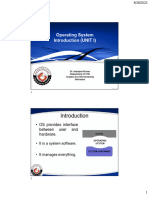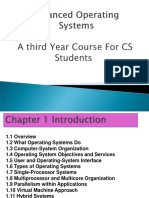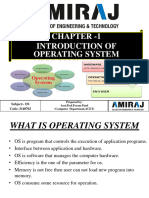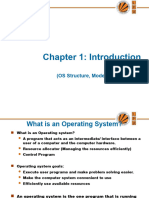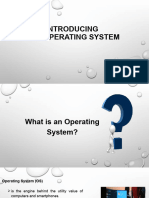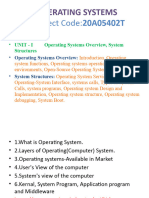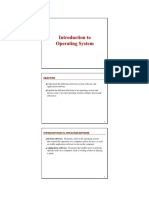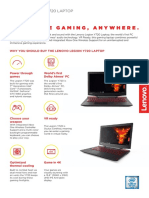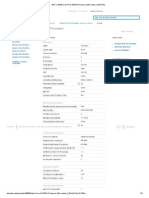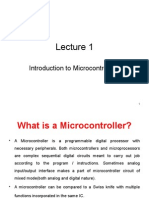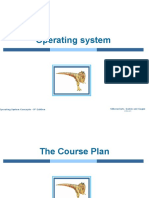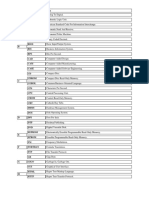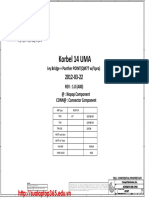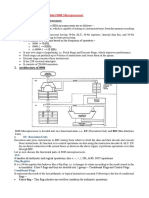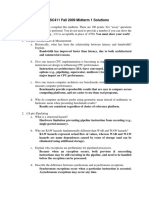CS622
OPERATING
SYSTEMS
�What is an OS?
An operating system is a program
that acts as an interface between
the user and the computer
hardware and controls the
execution of all kinds of
programs.
�Key Objectives
• Facilitate user interaction with the
hardware.
• Manage hardware resources
efficiently.
• Provide a stable and consistent
environment for applications.
�Core
Components
• Kernel: The core part of the OS managing
hardware resources
• User Interface: Command Line Interface and
Graphical User Interface
• System Utilities: Tools that help users manage
system tasks.
�OS Services and
Functions
1
Program Execution:
• Load and execute programs efficiently
• Handle errors during execution
I/O Operations:
2 • Manage input and output devices such as
keyboards, screens, and printers.
�OS Services and
Functions
3
File System Management
• Organize, store, retrieve, and manage
data.
Process Management
• Handle multiple processes, ensuring proper
4 CPU utilization.
• Schedule tasks using techniques like First-
Come-First-Served (FCFS) and Round Robin.
�OS Services and
Functions
5
Memory Management
• Allocate and deallocate memory
dynamically.
• Manage virtual memory for efficient
usage.
Security and Access Control
6 • Protect against unauthorized access.
• Manage user authentication and permissions.
�OS Services and
Functions
7
Error Detection and Handling
• Identify and respond to system or
application errors.
�Types of OS
Batch Operating Systems
1
Description: Programs are collected, grouped
into batches, and executed sequentially.
Example: Early IBM Systems
Advantages: Efficient for large jobs
Disadvantages: Lacks real-time user interaction
�Types of OS
Multiprogramming Operating Systems
2
Description: Multiple programs are loaded into
memory and executed concurrently.
Example: UNIX
Advantages: Maximizes CPU Utilization
Disadvantages: Requires complex scheduling
�Types of OS
Time-Sharing Operating Systems
3
Description: Multiple users share system resources
simultaneously, with each user getting a time
slice.
Example: Multics
Advantages: Facilitates multi-user interaction
Disadvantages: Performance degrades with too
many users
�Types of OS
Distributed Operating Systems
4
Description: Resources are distributed across
multiple systems but appear as a single system to
users.
Example: Amoeba, Microsoft’s Azure
Advantages: Increased reliability and scalability
Disadvantages: Requires network infrastructure
� Introduction to Kernel and User
Kernel mode Modes
Description: A privileged mode
User mode
where the OS has unrestricted
Description: A restricted mode
access to hardware resources.
for running user applications.
Functions: Direct hardware
Functions: Executes applications
access, resource allocation, and
with limited access to resources
system-level process
to prevent unauthorized actions.
management.
Characteristics:
Characteristics:
• Restricted memory access
• Can execute any CPU
• Requires system calls to access
instruction
hardware resources.
• Can access any memory
address
� Assignment:
2. How do 3. Why is it
1. What are time- essential to
the primary sharing have a
goals of an systems separate
operating differ from kernel and
system? multiprogr user modes
amming in an OS?
systems?
�THANK
YOU

